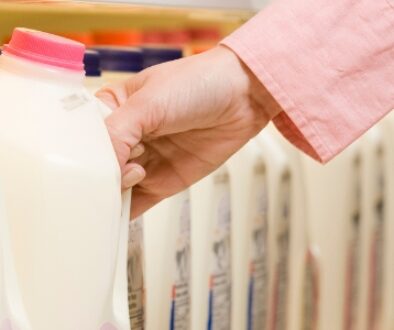Transitioning to Technology in Turbulent Times
As the COVID-19 pandemic stretches into the summer with no true end in sight, dairy processing companies must find ways to continually navigate their businesses in uncharted waters. The past several months have revealed weaknesses throughout industry supply chains, as well as the potential for coronavirus outbreaks in workplaces. The silver lining to the current situation is that many technological advancements are available today that can help dairy processing companies not only better manage their workload and employ their staff safely, but also deliver overall efficiencies that will last well beyond the pandemic.
Rising Challenges
According to World Economic Forum, some dairy cooperatives are advising dairy farms to dump thousands of gallons of milk and even cull their herds as demand from restaurants and other institutions, which make up roughly half of dairy consumption, cut hours or close their doors. Travel restrictions and a shortage of workers willing to take high-risk jobs add to the supply chain problem.
Ironically, demand from grocery stores has skyrocketed at the same time, resulting in shortages, as shoppers try to stock up and spend more time quarantining themselves at home. Limits on dairy products have been common in grocery stores as dairy processing companies struggle to repackage institutional-sized products to consumer-sized items.
Keeping Employees & Food Safe
Food Engineering magazine outlines general guidelines for keeping employees as safe as possible during the pandemic. Like most other companies today, dairy processing companies need to increase their sanitation efforts, monitor the daily health status of employees, insist that anyone with symptoms remain at home, and offer COVID-19 testing. Information about infected individuals must be communicated to all, and self-isolation should be expected to protect healthy workers.
As dairy processing plants experience a higher number of absentee employees due to isolation, illness or caring for sick family members, they may be bringing in staff from other departments or even from outside the organization itself. It’s critical that both health protocols be followed with contractors or temporary works.
In addition, thorough training on food safety protocols must be followed. These focus on ensuring that food is not contaminated. This may include non-corrosive parts, appropriate solvents and oils, and practices to ensure that equipment leakages or problems do not affect food quality.
Turning to Technology
Thankfully, many technological tools are now available to help employees complete their work in an efficient manner with as little contact with others as possible. Here are some of the most popular:
- Video Meetings
- Online meetings are the new norm, whether employees are working from home or in just another part of an office building. Video conferencing allows virtual face-to-face interactions to brainstorm, answer questions, or discuss plans as needed within the facility environment.
- Phone Apps
- A wide range of applications can easily be accessed by smartphones today, allowing employees to retrieve information and report progress using only their mobile device. For example, maintenance work orders can be distributed electronically to technicians, who can then access manuals and checklists on the phones, snap pictures of progress or to ask questions, and record what tasks were completed without any human interaction.
- Internet of Things
- As cloud computing and the internet of things, which is an interlinked system of various computing devices, continue to grow, dairy processing facilities will be able to collect and share data with less human interaction than ever before.
- Sensor Technology
- A wide variety of electronic sensing devices are available today that can help a facility monitor many different pieces of equipment around the clock and remotely. For instance, a sensor can measure the temperature of a dairy refrigeration unit, and as soon as the temperature falls out of range, an alert can be sent electronically to the maintenance supervisor. Not only does this minimize or even eliminate in-person service calls and inspections, but the equipment is also being monitored constantly, which allows small problems to be addressed before major breakdowns or waste occurs.
Keep up to date on current industry news here.
Source: Dairy Foods




